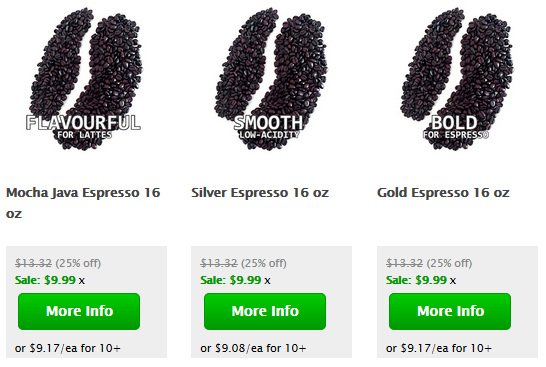Tamping is the act of using a tamper - a small, pestle-like tool/device which is round and flat on one end, and held in the hand by the other end - to compact the roasted, finely-ground espresso beans into a filter basket/portafilter for brewing an espresso.
The Best Espresso Tampers
Espresso tampers are a very simple tool, that can be made and customized in almost a limitless number of ways. Companies have emerged with unique material combinations include various types of metal for the tamper itself, and handles made from wood, leather, rubber and more. While a well built tamper will help with consistency and last for a long time, cheaper ones (eg. hollow base with a plastic handle that comes loose) can cause slippage and have inconsistent results.
The prices will generally range from the $10 mark for cheaper ones, to around $50 for solid, mid-range models from brands like Motta, Reg Barber or Espro. Specialty or custom tampers can use rare metals and exotics woods along with custom engraving and run reach hundreds or thousands of dollars.
The weight of the best tampers will be on the heavier side, making the technique of tamping the key rather than the force exerted.
There's lots of debate of flat-tampers vs. convex-tampers (argued to provide better "channeling" of the water) and solid-vs-calibrated (spring loaded) tampers - your best bet is to try a bunch yourself and figure out what works best for you.
How Much Pressure Should Be Applied During Tamping
Typically at least 15 to 25 pounds of pressure is required to compress the bed of loose espresso grounds. The amount of pressure required during tamping may vary depending upon if the machine is a pump-driven espresso machine (requiring a relatively strong compaction) or a steam-driven espresso machine which may require only a leveling tamp.
Subtleties to Consider When Tamping for Espresso
The precise tamping pressure that is best for pulling an espresso shot also depends upon various factors including the pressure exerted by the espresso machine, the fineness of the coffee grind, and the type, quality, and freshness of the coffee being used.
Tamper Size Standards
Tampers come in standard sizes typically measured in millimeters and specify the internal diameter of the filter basket. A 58mm tamper is often used with commercial and high-end espresso machines (espresso coffee makers), while smaller size options include 57 mm, 53mm, and 49mm tampers.
For tips on producing brewing magnificent espresso see Pulling A Perfect Espresso Shot and How to make Lattes and Cappuccinos.
For more information see the Espresso Coffee Guides Coffee and Espresso Glossary and also see our complete descriptions of all of the world's top gourmet coffee and Espresso Drink Recipes.
History lovers will appreciate our World's Best History of Coffee.
Buy Gourmet Coffee Beans

- ✔️ Fresh roasted to order
- ✔️ 100% high qualtiy Arabica coffee
- ✔️ Custom grind (or whole bean)
- ✔️ 1-way valve, laminate bag (for freshness)
- ✔️ Bulk discounts


Leave a Reply